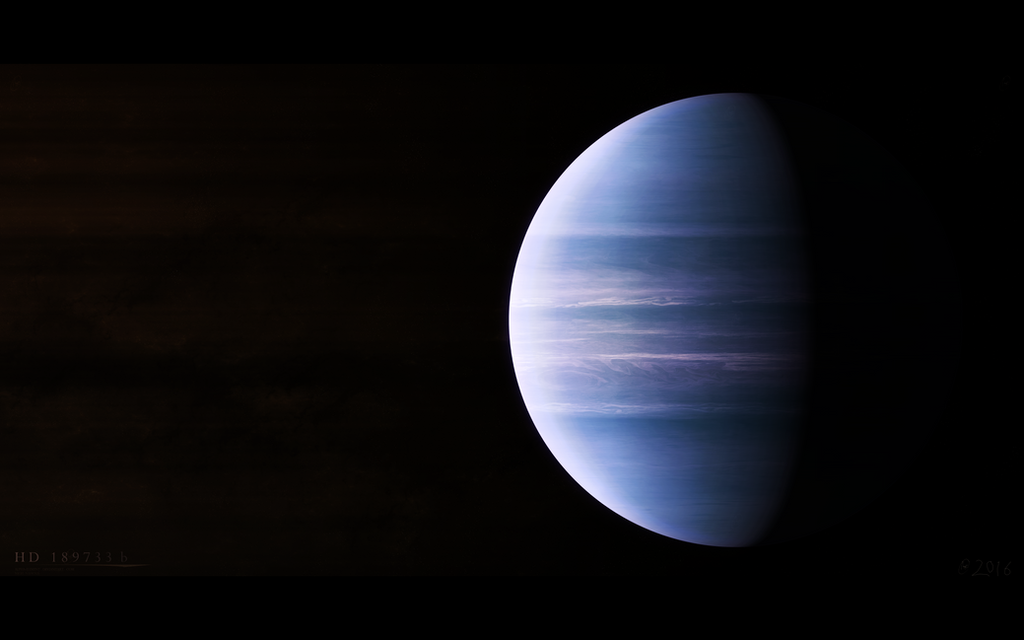HOME | DD
 Alpha-Element — HD 189733 b
by-nc-nd
Alpha-Element — HD 189733 b
by-nc-nd

#alpha #element #exoplanet #gas #giant #hd #hot #jovian #planet #extrasolar #b #189733
Published: 2016-04-24 16:00:04 +0000 UTC; Views: 7299; Favourites: 118; Downloads: 263
Redirect to original
Description
_______________________________________________________________________________________






 i recommend downloading to see all detail. also, large file size, sorry if it takes long.
i recommend downloading to see all detail. also, large file size, sorry if it takes long.






__________________________________________________________________________________________
hot jupiter incoming!







you can find out more here:
en.wikipedia.org/wiki/HD_20945…
so please let your eyes enjoy and leave any comments, favs or critiques, which are always welcome and appreciated!







________________________________________________________________________________________
HD 189733b






 constellation: ................... Vulpecula
constellation: ................... Vulpecula





 distance from earth: .......... 63.4 ly
distance from earth: .......... 63.4 ly





 star's name: ..................... HD 189733 A
star's name: ..................... HD 189733 A





 star's type: ....................... K1-2V
star's type: ....................... K1-2V





 star's mass: ...................... 0.846 solar masses
star's mass: ...................... 0.846 solar masses





 star's radius: ..................... 0.781 solar radii
star's radius: ..................... 0.781 solar radii





 star's luminosity: .............. 0.343 solar luminosities
star's luminosity: .............. 0.343 solar luminosities





 star's temperature: ........... 4,939 Kelvin
star's temperature: ........... 4,939 Kelvin





 system's name: ................. HD 189733
system's name: ................. HD 189733





 # stars in system: .............. 2
# stars in system: .............. 2





 # planets in system: .......... 1
# planets in system: .......... 1





 system's age: ..................... >0.6 billion years
system's age: ..................... >0.6 billion years





 planet's status: ................. confirmed
planet's status: ................. confirmed





 planet's name: .................. HD 189733b
planet's name: .................. HD 189733b





 habitability class: .............. nill
habitability class: .............. nill





 thermal class: .................... nill
thermal class: .................... nill





 earth similarity index: ....... nill
earth similarity index: ....... nill





 planet's radius: ................ 1.138 jovian radii
planet's radius: ................ 1.138 jovian radii





 planet's mass: .................. 1.162 jovian masses
planet's mass: .................. 1.162 jovian masses





 planet's density: ............... 1.045 g/cc
planet's density: ............... 1.045 g/cc





 surface gravity: ................ 2.268 earth gravities
surface gravity: ................ 2.268 earth gravities





 rotation period: ................ tidally locked
rotation period: ................ tidally locked





 average eq. temp: ............. 1,100 Kelvin
average eq. temp: ............. 1,100 Kelvin





 # satellites: ....................... unknown
# satellites: ....................... unknown





 orbital eccentricity: ............ 0.004
orbital eccentricity: ............ 0.004





 orbital distance: ................. 0.0314 au
orbital distance: ................. 0.0314 au





 year: .................................. 2.219 earth days
year: .................................. 2.219 earth days





 place in system: ................. next to star
place in system: ................. next to starDescription
HD 189733b is a hot jupiter type planet orbiting the sub-solar star; HD 189733 A about 63 light years away in the constellation of Vulpecula. It is currently the only planet discovered in the HD 189733 system.
The planet has a mass just over 1.1 times the mass of jupiter which was determined via the radial velocity method, and a radius of roughly 1.1 jovian radii which was determined via the transit method, which is also the method used to determine the planet's existance. From these two measurements, the planet has a density just higher than that of water's and so it may have a composition and internal structure similar to that of jupiter.
By analysing the planet's atmosphere during transit, it was determined that the planet has a large hot spot just east of the sub-stellar point and that the planet glows strongly in the blue region of the spectrum and so has a deep blue in colouration. It was also discovered that similar to HD 209458b, the planet is losing its atmosphere.
The planet orbits its star at a distance of just 3% the earth-sun distance placing it right next to the star in a "roaster" orbit. As such, one year on the planet is only 2.2 days. Due to the proximity of the planet to the star, it is highly likely that the planet does not rotate and so is tidally locked with respect to the star. Despite this, high speed hyper-sonic winds blowing at 7000 km/h still transfer enough heat to the night side of the planet keeping it at a roasting 1000 Kelvin. Due to the high heat and speeding winds, the usually solid materials such as rocks and metals liquefy in the planet's atmosphere and get blown around by the winds. These substances rain through the atmosphere forming liquid glass and metal rains being blasted sideways.
__________________________________________________________________________________________
This Artwork is © 2016 Alpha-Element. ALL RIGHTS RESERVED. DO NOT USE THIS ARTWORK!
Related content
Comments: 13

👍: 1 ⏩: 0

👍: 0 ⏩: 0

I'd say the blue mixed with subtly pinks and whites make it eye catching.
👍: 0 ⏩: 1

Looks fantastic, the clouds on it so neat and smooth **
Would be cool to see a moon nearby^^
👍: 0 ⏩: 1

Thank you, its a custom texture that I made for it.
It would be nice to have a moon around it but no moon would survive that close to a star, unfortunately.
👍: 0 ⏩: 0






























